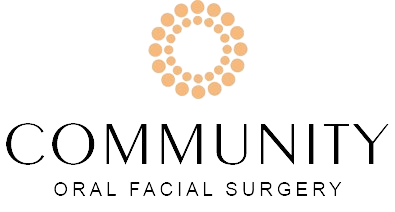Impacted canines in Anniston, AL, Alabaster, AL, Carrollton, GA, and Gadsden, AL, occur when the upper canine teeth fail to erupt into their proper position in the dental arch, often remaining trapped beneath the gum and potentially causing pain, swelling, and misalignment of adjacent teeth. This condition is essential to address because canines play a critical role in dental function and aesthetics, aiding in biting and tearing food, supporting the structure of the lips, and guiding the alignment of other teeth.
Early detection through regular dental check-ups and timely intervention with orthodontic or surgical treatment can prevent complications, ensuring proper dental development and overall oral health.
Causes of Impacted Canines
Genetic Factors
Genetics plays a significant role in dental development, including tooth eruption. If a family member has experienced impacted canines, there is an increased likelihood that others in the family may also face this issue. Genetic factors can influence the size and shape of the dental arch and the timing and pathway of tooth eruption.
Lack of Sufficient Space
One of the primary reasons for impacted canines is a lack of adequate space in the dental arch. Usually, canines erupt between the ages of 11 and 12, but if there is insufficient space due to crowding of teeth or a smaller-than-average jaw size, the canines may not have enough room to emerge properly. This lack of space can result from early loss of baby teeth or irregularities in dental development.
Prolonged Retention of Baby Teeth
Another common cause of impacted canines is the prolonged retention of baby teeth (deciduous teeth). Baby teeth are supposed to fall out naturally to make way for permanent teeth, including canines. However, if a baby tooth does not fall out on schedule, it can block the pathway for the erupting canine, causing it to become impacted beneath the gum. Call us to learn more.
Abnormal Tooth Development
Irregularities in tooth development can also contribute to impacted canines. This includes conditions such as supernumerary teeth (extra teeth) or abnormal positioning of adjacent teeth. Supernumerary teeth can occupy space and obstruct the standard eruption path of canines, while abnormal positioning of neighboring teeth can physically block the canines from erupting into their intended position.
Structural Issues in the Jaw
Structural abnormalities in the jawbone or surrounding tissues can affect canine eruption. Trauma to the mouth or jaw, developmental conditions affecting bone growth, or tumors in the jawbone can all interfere with the normal movement of teeth, including the upper canines.
Treatment Options for Impacted Canines
Orthodontic Treatment
Orthodontic treatment is often recommended to create space in the dental arch and guide the impacted canine into its proper position. This typically involves using braces or other dental appliances to move the teeth into alignment gradually. Benefits include:
- Braces apply gentle pressure to reposition teeth, including impacted canines, ensuring they align correctly within the dental arch.
- Correcting the position of canines helps maintain proper bite alignment, improving chewing efficiency and overall dental function.
- Properly aligned canines contribute to an attractive smile and facial symmetry, boosting self-confidence.
![Community Oral Facial Surgery Community Oral Facial Surgery]() Surgical Exposure and Bonding
Surgical Exposure and Bonding
Surgical intervention may be necessary for canines deeply impacted within the jawbone or blocked by other teeth. After administering anesthesia, the oral surgeon exposes the impacted tooth and bonds an orthodontic bracket during this procedure. This bracket is then connected to braces to guide the tooth into its correct position. Benefits include:
- Surgical exposure allows direct access to the impacted canine, facilitating precise positioning and alignment.
- Combining surgery with orthodontic treatment can expedite the process of guiding the canine into place.
- Once in position, the bonded bracket ensures the canine remains stable and properly aligned.
Extraction
Extraction may be necessary when impacted canines cannot be guided into proper alignment or pose a risk to surrounding teeth and tissues. This is typically followed by orthodontic treatment to close the gap and align adjacent teeth. Benefits include:
- Removing impacted canines prevents potential problems such as infections, dental crowding, and misalignment.
- Extraction eliminates the source of potential dental issues, promoting better overall oral hygiene and function.
- Extraction may provide a straightforward solution for severe cases to alleviate symptoms and restore dental health.
Retention
After successfully aligning the impacted canine, retention is crucial to maintain its new position. Retainers are custom-made appliances worn over the teeth to prevent them from returning to their original positions. Benefits include:
- Retainers ensure that the teeth, including the impacted canine, remain in their corrected positions long-term.
- They minimize the risk of orthodontic relapse, ensuring the effectiveness of treatment over time.
- Retainers can be removable or fixed depending on individual needs and treatment goals.
The Importance of Addressing Impacted Canines
- Impacted canines can lead to dental crowding, misalignment of teeth, and difficulty biting or chewing correctly.
- Properly positioned canines support the structure of the face, aid in chewing and speaking, and contribute to overall dental function.
- Canines are prominent teeth that affect the smile's appearance and facial profile. Misaligned or impacted canines can impact self-confidence and social interactions.
- Early detection and treatment of impacted canines can prevent the need for extensive orthodontic treatment later in life, promoting optimal dental health and alignment.
Impacted canines can lead to discomfort, misalignment, and other dental issues if left untreated. Visit Community Oral Facial Surgery at our multiple locations: 420 1st St N, Alabaster, AL 35007; 901 Leighton Ave #401, Anniston, AL 36207; 101 Trojan Drive, Carrollton, GA 30117; and 817A Riverbend Dr, Gadsden, AL 35901, to explore treatment options and regain your confident smile. Schedule your appointment conveniently online or by calling (205) 208-0167, (256) 236-6090, (770) 832-8819, or (256) 547-5731.

 Surgical Exposure and Bonding
Surgical Exposure and Bonding 
